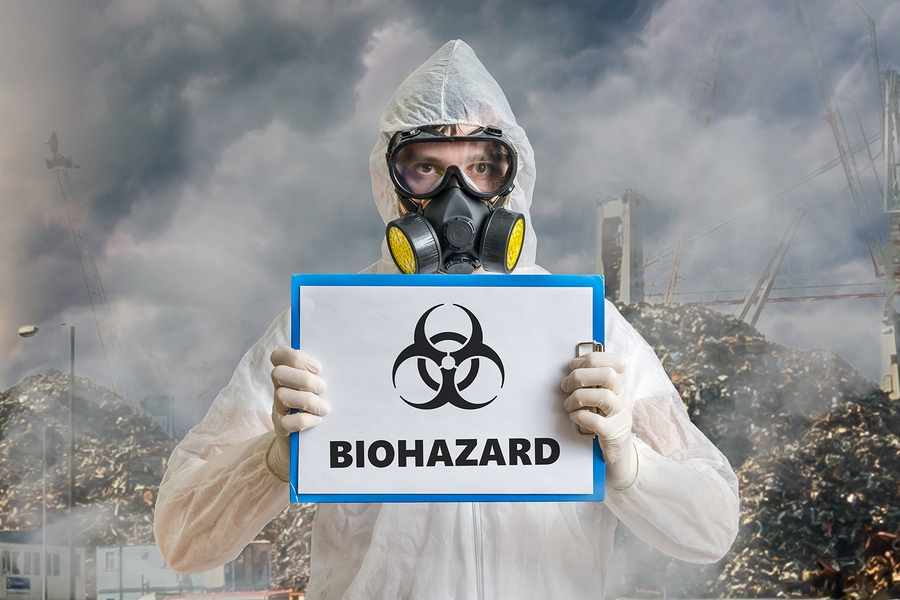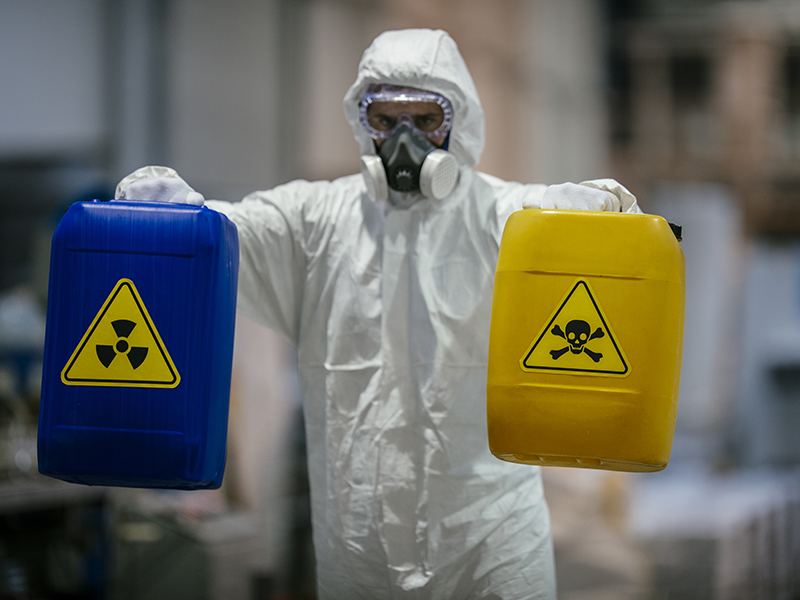Clandestine Lab Cleanup: Comprehensive Purification for Hazardous Sites
Clandestine Lab Cleanup: Comprehensive Purification for Hazardous Sites
Blog Article
Expert Biohazard Cleansing and Decontamination for Blood, Bodily Fluids, and Hazardous Products
In the realm of biohazard cleansing and purification for blood, bodily liquids, and hazardous materials, accuracy and competence are paramount. The potential health threats connected with exposure to biohazards highlight the critical requirement for thorough handling and comprehensive clean-up. Specialized training outfits professionals with the understanding and abilities essential to address these dangerous circumstances successfully. Nonetheless, it is not merely regarding tidying up; the importance of using proper decontamination strategies can not be overemphasized. As we navigate the elaborate landscape of biohazard clean-up, recognizing the subtleties of regulations, compliance, and the specialized equipment at play ends up being critical in ensuring a safe and extensive purification process.
Health Risks of Biohazard Exposure
Exposure to biohazards poses significant wellness risks that can lead to extreme effects for communities and individuals alike. Biohazards encompass a wide variety of biological materials, consisting of blood, bodily liquids, mold and mildew, microorganisms, infections, and other possibly infectious products. When people come into call with these biohazards, whether with accidents, inappropriate handling, or ecological direct exposure, they deal with the risk of having severe diseases or illness.
Among the main wellness threats connected with biohazard direct exposure is the transmission of infectious illness. Bloodborne pathogens such as HIV, hepatitis B and C, and numerous bacteria can be existing in biohazardous materials, presenting a straight risk to human wellness. Inhaling airborne biohazards like mold and mildew spores or entering into call with infected surfaces can likewise bring about breathing concerns, allergic reactions, and other negative wellness effects.
Furthermore, biohazard exposure can have long-term health effects, with some diseases materializing years after the preliminary contact (Blood Cleanup). Consequently, it is critical to prioritize correct biohazard cleansing and purification to mitigate these health dangers and make sure the safety and security of individuals and communities

Specialized Training for Biohazard Clean-up
When it involves dealing with biohazard cleaning effectively and safely, specialized training plays a fundamental role in making certain proper purification treatments are followed. Biohazard cleanup needs certain expertise and skills to properly alleviate risks connected with bloodborne microorganisms, bodily liquids, and hazardous materials. Experts learnt biohazard cleaning undertake rigorous instruction on how to securely take care of, get rid of, and get rid of biohazardous materials to protect against contamination and exposure.
Specialized training for biohazard cleanup covers a variety of vital subjects, including appropriate personal protective equipment (PPE) usage, bloodborne virus awareness, purification techniques, and hazardous waste disposal procedures. People educated in biohazard cleaning are geared up with the essential knowledge to assess contamination levels, identify possible risks, and implement appropriate clean-up procedures in conformity with regulatory requirements.
Continuous training and education are extremely important in the field of biohazard cleaning to remain updated on the newest decontamination technologies, security methods, and policies. By purchasing specialized training, biohazard clean-up specialists can effectively reply to emergency situation cleaning circumstances and safeguard both public wellness and the atmosphere.
Significance of Correct Decontamination Methods
Making use of correct decontamination techniques is vital in biohazard cleaning to effectively eliminate dangerous products and minimize health and wellness threats. Reliable purification not just ensures the removal of visible traces of blood, bodily fluids, and various other biohazards but also targets invisible pathogens that may posture major wellness threats if not properly eradicated. By following stringent decontamination methods, trained experts can significantly decrease the threat of direct exposure to harmful microbes, viruses, and germs that can cause infections or illness.
Appropriate purification techniques entail the usage of specialized devices and anti-bacterials that are especially created to reduce the effects of biohazards successfully. Extensive cleaning and disinfection of infected areas are necessary to prevent the spread of virus and make sure a safe setting for passengers. Furthermore, the right disposal of biohazardous waste following purification procedures is important in stopping contamination of other surface areas or individuals.

Tools and Tools for Safe Clean-up
The correct equipment and tools play a critical role in guaranteeing the reliable and safe clean-up of biohazardous products. When dealing with blood, bodily fluids, or harmful products, biohazard cleaning professionals count on specialized equipment to lessen exposure risks and extensively decontaminate the affected area. Personal protective devices (PPE) such as handwear covers, coveralls, masks, and safety glasses are important to shield versus direct call with potentially transmittable materials. Additionally, biohazard cleaning sets consisting of anti-bacterials, absorbing products, and biohazard bags are made use of to safely have and get rid of of contaminated products. Blood Cleanup.
Advanced cleansing devices like hospital-grade disinfectants, HEPA-filtered vacuums, and fogging equipments are employed to sterilize surface areas and remove biohazards efficiently. Specialized tools such as sharps containers and biohazard waste disposal bins are used to securely manage sharp items and biohazardous waste materials. By utilizing the right tools and devices, biohazard cleaning professionals can ensure a thorough cleanup process that focuses on safety and security and minimizes health dangers for both employees and owners of the affected space.
Laws and Compliance in Biohazard Cleansing
Appropriate adherence to policies and conformity requirements is critical in biohazard cleansing to make sure the safety of both employees and the environment. Federal government agencies such as OSHA (Occupational Safety And Security and Health Management) and the EPA (Environmental Protection Company) have established details standards for biohazard clean-up procedures to reduce health and wellness threats and environmental contamination. These laws cover a variety of elements consisting of the handling, transportation, and disposal of biohazardous products, as well as the essential training and protective devices needed for personnel entailed in the cleanup process.
Biohazard cleansing firms must stay updated with these regulations to ensure that their procedures satisfy the called for safety requirements. Failing to adhere to these policies can lead to serious repercussions, including penalties, lawsuit, and jeopardizing the wellness of individuals and the environment. By adhering to rigorous regulations and compliance steps, biohazard cleansing business can properly mitigate risks and guarantee a secure and thorough cleanup process for all parties involved.
Conclusion
To conclude, biohazard cleaning and decontamination require specialized training, proper techniques, and adherence to policies. Exposure to blood, bodily liquids, and unsafe products positions significant health risks, making it crucial to use the appropriate tools and devices for risk-free cleanup. By following rigorous methods and standards, experts can efficiently mitigate the threats connected with biohazard direct exposure and guarantee the safety of both themselves and others.
As we browse the complex landscape of biohazard clean-up, understanding the subtleties of guidelines, compliance, and the specialized devices at play becomes important in making certain a detailed and safe decontamination procedure. (Blood Cleanup)
When it comes to managing biohazard cleanup successfully and safely, specialized training plays a fundamental function in guaranteeing correct decontamination treatments are complied with.Utilizing appropriate decontamination methods is crucial in biohazard cleanup to efficiently lessen and eliminate harmful Biohazard removal products health and wellness threats. Furthermore, biohazard cleansing kits consisting of anti-bacterials, absorptive products, and biohazard bags are used to securely contain and dispose of polluted things.
Government companies such as OSHA (Occupational Safety And Security and Health Administration) and the EPA (Environmental Defense Agency) have developed details guidelines for biohazard clean-up treatments to decrease health dangers and ecological contamination.
Report this page